This year (2018) sees the 100th anniversary of the birth of one of Hollywood’s most enduring starlets. Rita Hayworth’s life was the Hollywood dream of glamour and riches mixed with the classic tragedy of failed marriages and suspected alcohol abuse.
Her death from complications of Alzheimer’s disease, at the age of 68, helped turn the disease from a hidden problem to an international conversation.
Every year there is a gala held in Hayworth’s honor, and to date, it has raised over $75 million for the Alzheimer’s Association.
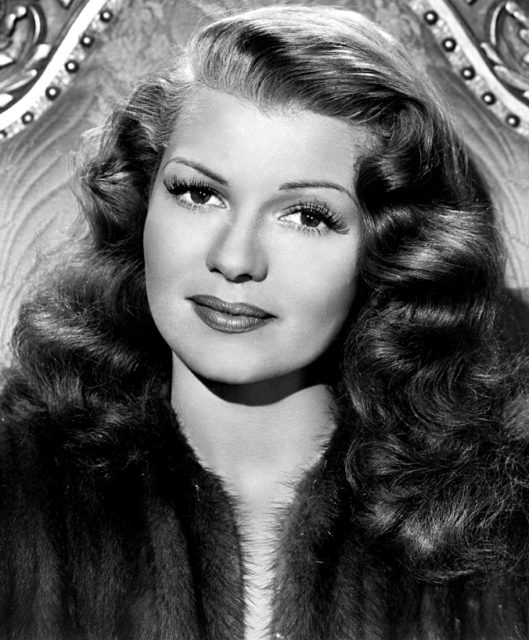
Rita Hayworth was born Margarita Carmen Cansino on October 17, 1918, in Brooklyn, New York to an illustrious dancing family.
From the time she could walk, Hayworth was taught how to dance and by the time she was five she appeared in her first Broadway production.
When the Great Depression hit the USA, Hayworth’s family lost all their investments; to keep the family afloat the Cansino clan moved to Mexico where twelve-year-old Hayworth danced in nightclubs and bars with her father as “The Dancing Cansinos.”
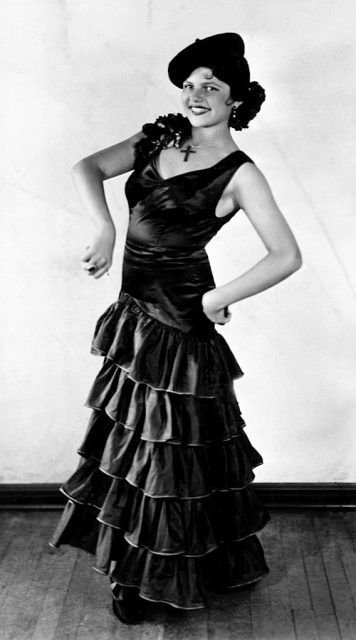
At 16, Hayworth was working under the name Rita Cansino and was offered a short-term contract with Fox Studios. She was put in small, unremarkable roles and typecast as an exotic teenager; her career at Fox seemed to stall, but her potential was recognized by her future first husband, movie promoter Edward C. Johnson, who arranged for her to audition for Harry Cohn at Columbia.

Although Harry Cohn was eager to offer Cansino a contract, he felt that her Mediterranean looks were too exotic for the big screen.
Under the guidance of Cohn and Johnson, Rita Cansino became Rita Hayworth, dying her hair dark red and undergoing painful surgery to change her hairline.
This marked the beginning of Rita Cansino’s transformation into the star who would become known in the press as “The Love Goddess.”
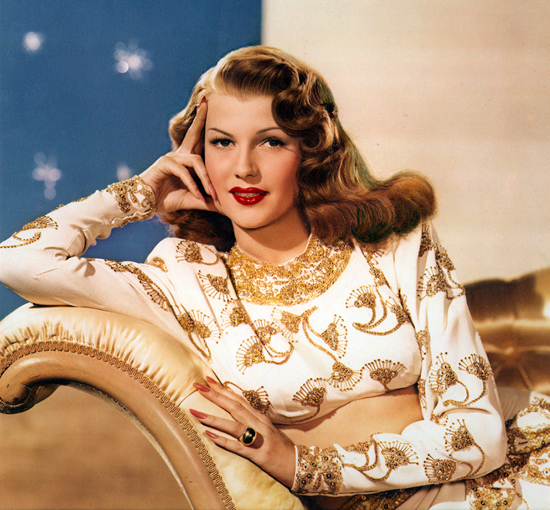
Once her transformation was complete, Harry Cohn put a lot of energy into promoting his newest protégé, and by 1941 she was one of the most sought-after stars in Hollywood, performing next to the likes of James Cagney, Cary Grant, and Joan Crawford.
Hayworth also appeared in a handful of pictures with Fred Astaire who was impressed with the energy and professionalism she was able to bring to their dance routines. As Astaire noted in his biography, “Rita danced with trained perfection and individuality … She was better when she was ‘on’ than at rehearsal.”
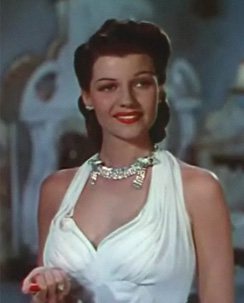
During World War II, a Life magazine picture of Hayworth became the most requested pin-up photograph for serving troops two years in a row.
This picture has become an icon in itself and is featured in the Stephen King short story and related film, Rita Hayworth and Shawshank Redemption.
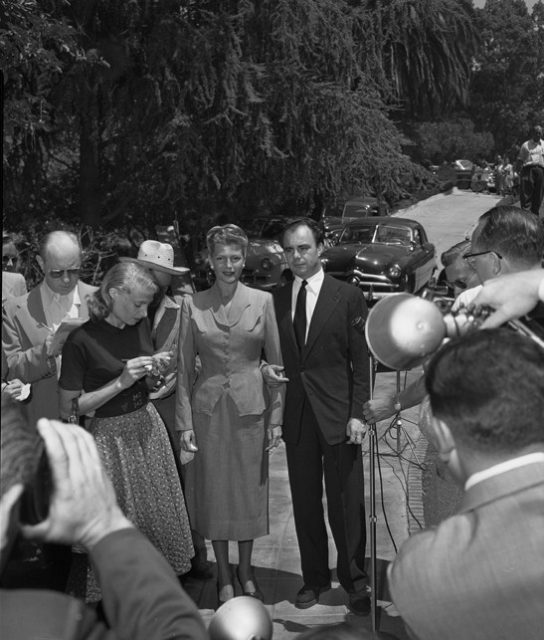
Hayworth’s career continued to rise throughout the 1940s, and she became the most bankable star in Hollywood. Her image as the Love Goddess was cemented by her performance in the title role of Gilda where Hayworth’s stunning performance of “Put the Blame on Maim” upset the censors who didn’t quite know how to handle her explosive charisma.
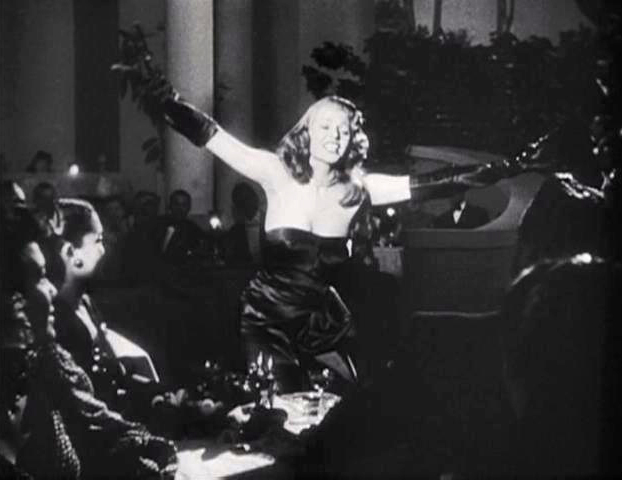
While Hayworth’s star was reaching the heights of worldwide fame, the Love Goddess image was proving hard to escape on the screen and in reality, “Every man I knew went to bed with Gilda and woke up with me,” Hayworth famously lamented.
Her marriage to Orson Welles ended after five years, with Hayworth stating, “I couldn’t handle his genius.” She went onto marry the playboy Prince Aly Khan, son of Aga Khan III of the Nizari Ismailis.
The marriage was not to last, and she would move back to America with her young daughter.
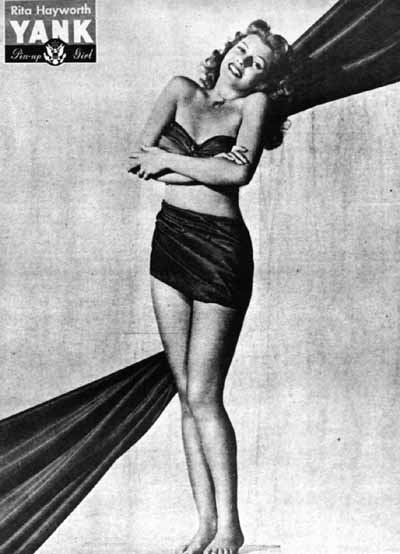
What followed were two more failed marriages to unsuitable and abusive men and a handful of movies which Hayworth did not want to do but had complete due to financial struggles. By this time, Hayworth was having difficulty remembering her lines and would sometimes slur her speech.
Those around her assumed her symptoms were due to alcohol misuse, but it was actually the beginning of Alzheimer’s disease.
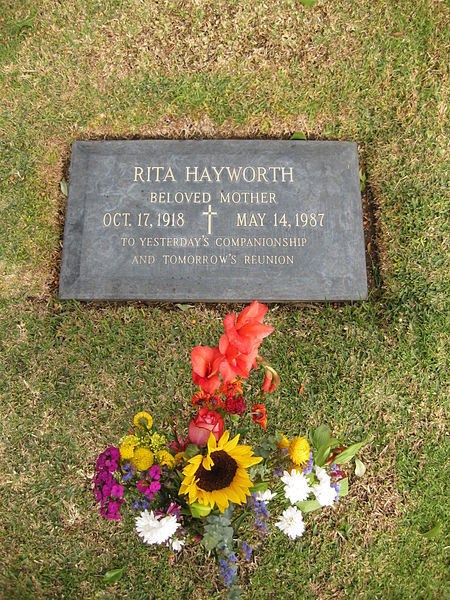
The dignity with which she carried herself during the disease progression and her candor in sharing her disease with the public gained her new admirers and pushed Alzheimer’s into the public eye.
Upon her death in 1987, President Ronald Reagan said, “Her courage and candor, and that of her family were a great public service in bringing worldwide attention to a disease which we all hope will soon be cured.”
Read another story from us: Farrah Fawcett and the Best-Selling Swimsuit Poster of All Time
Rita Hayworth will forever be remembered as the epitome of Hollywood glamour, and her legacy will continue to raise awareness of Alzheimer’s worldwide.
